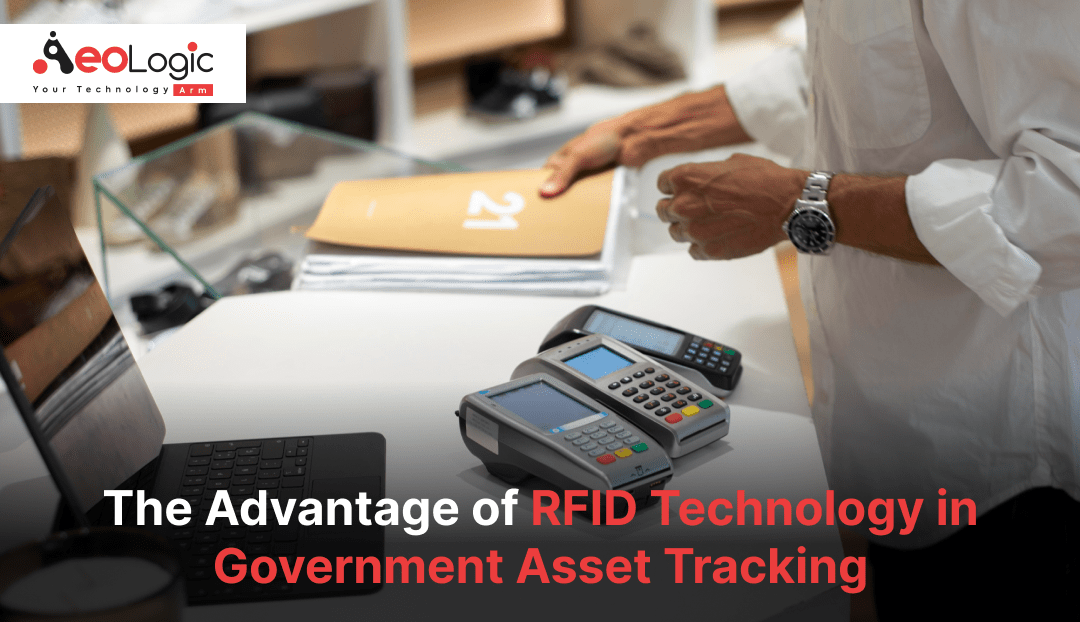In the contemporary landscape of fast-paced and interconnected operations, efficient asset tracking has become crucial for organizations across various sectors. Effective asset management is essential for optimizing operations, reducing costs, and enhancing productivity. Radio Frequency Identification (RFID) technology has emerged as a transformative solution, offering advanced capabilities to streamline asset tracking processes and provide real-time insights into the location and condition of valuable resources. In this blog, we are going to discuss the advantage of RFID technology in government asset tracking.
Also read: Advanced Pharmaceutical Traceability Solutions to Prevent Counterfeiting
Understanding the Advantage of RFID Technology in Government Asset Tracking
RFID technology operates on the principle of using electromagnetic fields to automatically identify and track assets. It consists of RFID tags and RFID readers. An RFID tag comprises a microchip, which stores information about the asset, and an antenna, which transmits this information to a reader. The reader emits radio waves that activate the tag, allowing it to transmit its data. This technology provides several advantages in asset tracking:
Real-time Tracking and Visibility: RFID technology offers instant access to data regarding the location and status of assets. This real-time visibility is a significant advantage, allowing organizations to make proactive decisions, reduce the time spent searching for items, and improve overall asset utilization. For example, in a government setting, real-time tracking can ensure that critical assets like vehicles or equipment are always accounted for and properly managed.
Enhanced Accuracy and Reduced Manual Errors: Traditional asset tracking methods, such as manual barcoding, are prone to human error. RFID technology automates data collection, minimizing the potential for mistakes associated with manual entry. This increased accuracy leads to more reliable inventory management and fewer discrepancies. In government operations, where accuracy is paramount for accountability and compliance, RFID helps maintain high standards of data integrity.
Streamlined Inventory Management and Cost Savings: The automation provided by RFID technology simplifies inventory management processes. By reducing the need for manual inventory counts and audits, RFID lowers carrying costs and optimizes inventory levels. This efficiency results in substantial cost savings over time. For government agencies, these savings can be redirected to other critical areas, improving overall financial management.
Improved Operational Efficiency and Productivity: RFID technology facilitates precise and up-to-date asset data, which enhances workflow efficiency and productivity. Employees spend less time locating assets and more time focusing on tasks that add value. In a government context, this means that resources are used more effectively, leading to better service delivery and operational performance.
Applications of RFID Technology in Various Sectors
The advantages of RFID technology in government asset tracking and its versatility allows it to address specific asset tracking challenges across different industries. Here’s how RFID is applied in various sectors:
Manufacturing and Supply Chain Management: In manufacturing, RFID ensures the smooth flow of materials and components, which is essential for maintaining production efficiency and reducing delays. It also plays a critical role in tracking shipments throughout the supply chain. This capability improves visibility and logistical management, helping manufacturers and suppliers meet demand more effectively.
Retail and Inventory Management: RFID technology revolutionizes retail operations by automating inventory counts, preventing stockouts, and facilitating efficient restocking. Retailers benefit from improved customer service and increased sales due to better inventory control. For government-managed retail operations, such as those in public sector stores, RFID ensures optimal stock levels and enhances operational efficiency.
Healthcare and Medical Equipment Tracking: In healthcare, RFID improves the tracking of medical equipment, ensuring timely maintenance and reducing the risk of lost or misplaced items. This advancement contributes to enhanced patient care and safety by ensuring that critical medical devices are readily available and properly maintained. For government-run healthcare facilities, RFID helps manage equipment and resources more effectively, leading to improved patient outcomes.
Transportation and Logistics Optimization: RFID enhances tracking and tracing of shipments in the transportation and logistics sectors. This capability supports route optimization, better supply chain visibility, and compliance with safety regulations. Government agencies involved in transportation and logistics can leverage RFID to improve the efficiency of public transportation systems and logistics operations.
IT Asset Management and Data Centers: RFID technology assists in managing IT assets such as laptops, servers, and networking equipment. It ensures efficient inventory control and helps prevent loss or theft of valuable assets. For government IT departments, RFID provides a reliable way to track and manage technology assets, ensuring they are used effectively and securely.
Challenges and Limitations of RFID Technology
Despite the many benefits of RFID technology in government asset tracking, here are some of its challenges and limitations:
High Initial Costs and Infrastructure Requirements: The initial investment in RFID technology can be substantial, especially for large-scale implementations. This includes the costs of tags, readers, and system integration. Government agencies must carefully evaluate the cost-benefit analysis before adopting RFID to ensure that the long-term benefits outweigh the initial expenditures.
Read Range Limitations and Environmental Interference: RFID performance can be affected by physical barriers, such as walls or metal objects, and interference from liquids. This can limit the effective read range of RFID tags. Proper planning and positioning of RFID readers are necessary to address these issues and ensure optimal performance in different environments.
Tag Collision and Data Privacy Concerns: When multiple RFID tags are in close proximity, there is a risk of data collisions, where signals from different tags interfere with each other. Additionally, RFID systems can carry sensitive information, raising concerns about data privacy and security. Ensuring robust data protection measures is crucial to prevent unauthorized access and maintain confidentiality.
Integration Challenges with Existing Systems: Integrating RFID technology with legacy asset management systems can be complex and may require additional effort and customization. Government agencies need to plan and execute this integration carefully to ensure a seamless flow of data and avoid disruptions to existing processes.
Compliance with Regulatory Standards: RFID asset tracking must adhere to regulatory standards and data protection laws. Government agencies must ensure that their RFID systems comply with relevant regulations to avoid legal issues and ensure proper handling of sensitive information.
Also read: Streamlining Operations in the Conveyor Industry with RFID Technology
Conclusion
RFID technology offers significant advantages for asset tracking in government operations, including real-time visibility, improved accuracy, cost savings, and enhanced productivity. Its applications span various sectors, from manufacturing and retail to healthcare and logistics. However, successful implementation of RFID technology requires addressing challenges such as high initial costs, environmental interference, and data privacy concerns. By carefully considering these factors and planning effectively, government agencies can harness the full potential of RFID to optimize asset management and improve operational efficiency.







